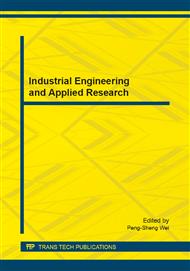[1]
Y. Murakami, Analysis of stress intensity factors of Mode I, II and III for inclined surface cracks of arbitrary shape, Engineering Fracture Mechanics, 1985, 22, (1), 101-114.
DOI: 10.1016/0013-7944(85)90163-8
Google Scholar
[2]
Y. Murakami, M. Endo, Effects of defects, inclusions and inhomogeneities on fatigue strength, International Journal of Fatigue, 1994, 16, 163-182.
DOI: 10.1016/0142-1123(94)90001-9
Google Scholar
[3]
J. C. Lee, T. N. Farris, L. M. Keer, Stress intensity factors for cracks of arbitrary shape near an interfacial boundary, Engineering Fracture Mechanics, 1987, 21, (1), 27-41.
DOI: 10.1016/0013-7944(87)90003-8
Google Scholar
[4]
N. Noda, K. Kobayashi, M. Yagishita, Variation of mixed modes stress intensity factors of an inclined semi-elliptical surface crack, International Journal of Fracture, 1999, 100, 207–225.
Google Scholar
[5]
W.O. Soboyejo, J.F. Knott, An investigation of crack closure and the propagation of semi-elliptical fatigue cracks in QIN (HY80) pressure vessel steel, International Journal of Fatigue, 1995, 17, (8), 577-581.
DOI: 10.1016/0142-1123(96)81217-5
Google Scholar
[6]
K. Tanaka, Y. Nakai, O Maekawa, Microscopic study of fatigue crack initiation and early propagation in smooth specimen of low carbon steel, Zairyo, 1982, 31, (343), 66-72. (in Japanese).
Google Scholar
[7]
K. Takao, H. Nisitani, Relation between characteristics of crack initiation of metals and their notch sensitive in fatigue, Zairyo, 1987, 39, (409), 1060-1064. (in Japanese).
Google Scholar
[8]
T. Matsueda, H. Noguchi, Fatigue limit evaluation of blunt-notched specimen using ΔKth value of Small Crack, Procedia Engineering, 2011, 10, 1023-1028.
DOI: 10.1016/j.proeng.2011.04.168
Google Scholar
[9]
T. Matsueda, A new evaluation method to calculate crack initiation limit with medified crack aspect ratios in notched specimen of carbon steels, Applied Mechanics and Materials, 2014, 563, 80-84.
DOI: 10.4028/www.scientific.net/amm.563.80
Google Scholar
[10]
T. Matsueda, A new evaluationmethod of crack initiation in notch shape on aspect ratio of low carbon alloy, Materials Research innovations, 2014, Article in press.
DOI: 10.1179/1432891714z.000000000906
Google Scholar
[11]
Y. Verreman, N. Limodin, Fatigue notch factor and short crack propagation, Engineering Fracture Mechanics, 2008, 75, 1320–1335.
DOI: 10.1016/j.engfracmech.2007.07.005
Google Scholar
[12]
H. Noguchi, Y. Aono, Application limit of linear notch mechanics, Transaction of the Japan Society of Mechanical Engineers. A, 2000, 66, (589), 78-85. (in Japanese).
Google Scholar
[13]
N. Noda, M. Sera, Y. Takase, Stress concentration factors for round and flat test specimens with notches, International Journal of Fatigue, 1995, 17, (3), 163-178.
DOI: 10.1016/0142-1123(95)98937-x
Google Scholar
[14]
Y. Murakami et al., Stress intensity factor hand book Vol. 2, Pergamon Press, UK, 1987, 725-27, 802-03.
Google Scholar
[15]
Y. Murakami, M. Endo, Quantitative evaluation of fatigue strength of metals concentration various small defects or cracks, Engineering fracture mechanics, 1983, 17, (1), 1-15.
DOI: 10.1016/0013-7944(83)90018-8
Google Scholar
[16]
K. Hatanaka, S. Shimizu, Fatigue Strength in Long Life Range and Non-Propagating Fatigue Crack in SUS 304 Type Stainless Steel, Transaction of the Japan Society of Mechanical Engineers. A, 1981, 48, (428), 405-413. (in Japanese).
DOI: 10.1299/kikaia.48.405
Google Scholar


